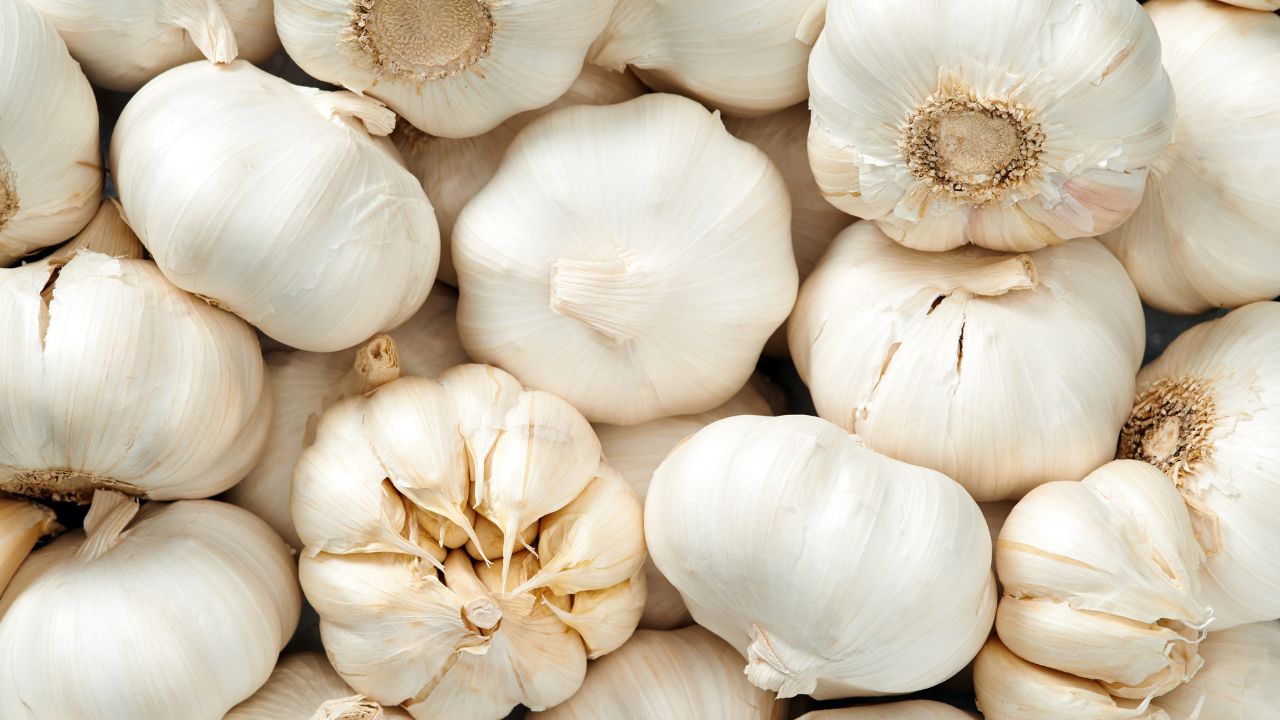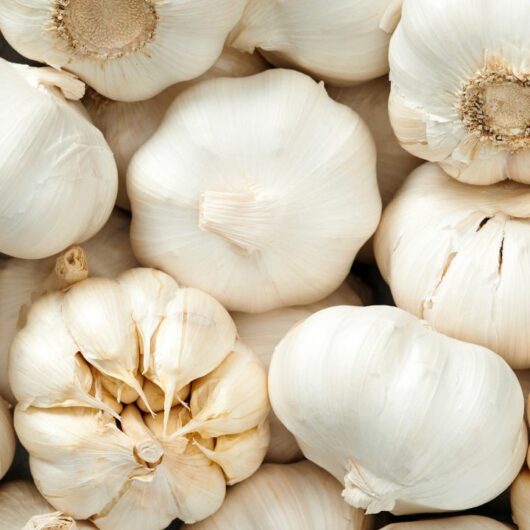Whether you’re unable to eat garlic due to allergies or intolerances, or you’ve started cooking only to discover that you’ve run out of this popular seasoning, there’s no getting around the fact that cooking without garlic is tricky.
So many recipes call for garlic as part of the overall flavor that being unable to use it for whatever reason can be frustrating.

However, if you know all the best garlic substitutes you can use instead, it doesn’t have to be!
In this article, we’ll be letting you in on all the secret (and some not-so-secret) substitutes for garlic, so you never have to compromise the flavor of your favorite recipes.
Substitutes For Garlic
1. Garlic Granules/Powder/Flakes
This might be a fairly obvious one, but if consuming garlic isn’t a health concern for you and your only issue is that you don’t have any garlic on hand, you can always substitute fresh garlic for a garlic powder, garlic flakes, or garlic granules.
For every garlic clove called for by the recipe, you can add ½ a teaspoon of garlic flakes or granules. If you’re going to be using the more finely-ground garlic powder instead, you should add just ¼ teaspoon per garlic clove.
Garlic granules, powder, or flakes are arguably the best substitute for fresh garlic because the taste is more or less identical, so barring allergies, we recommend this swap.
2. Garlic Oil
Another garlic-based substitute for fresh garlic that we have used with great results is garlic oil.
This is likely to be more expensive than garlic granules, powder, or flakes, but buying a bottle of garlic oil will be a long-lasting investment and will come in useful for those moments when you forget to buy garlic at the store.
Garlic oil is garlic-infused olive oil. There may be some other spices or herbs mixed in depending on the brand. This is a versatile substitute that you can add during cooking or drizzle over your meal before serving.
It’s best to add garlic oil to taste because different brands will have different levels of garlic infusion. In general, though, a teaspoon of garlic oil will have a milder flavor than a clove of fresh garlic.
3. Shallots
Shallots are very similar to garlic because they are also part of the allium genus. This means that they work well as a substitute for garlic.
If you have a garlic allergy, bear in mind that you may also be allergic to other alliums, which might mean that shallots are off the table, too. However, if health isn’t the issue, shallots are definitely one of the best substitutes.
The actual flavor of shallots is more akin to onion than garlic, but the aroma is very garlic-like.
So if you’re making a tomato sauce or another recipe where the scent is a major factor in the overall experience, substitute a tablespoon of ground shallot (see also ‘6 Shallot Substitutes‘) for a garlic clove.
4. Asafoetida
Here’s one you may not have heard of. Asafoetida is a type of gum from a kind of giant fennel. It’s known for its very strong smell, which has been described as ‘like rotting garlic’.
Now, while the ‘rotting’ part of that description might not sound particularly appetizing, when you cook asafoetida powder with other strongly-flavored ingredients, it tastes very similar to fresh garlic.
Add this ingredient little by little and taste as you go to avoid an overpowering flavor or smell.
5. Chives
Yet another member of the allium family, chives can be used as substitutes for garlic because of their onion-like flavor.
Chives work better as a garlic substitute in some dishes than others.
For example, they are the perfect addition to a mashed potato recipe or a pasta dish, but if you’re cooking with other extremely strong flavors, the more mild chive flavor might not come through.
For the best results, use a tablespoon of chives (minced) to replace a clove of garlic.
6. Fennel
Fennel has a slightly licorice-like flavor, but in a pinch, it can be used as a substitute for garlic. Fennel seeds are the most similar to garlic in taste, but you can also use fennel fronds if you’re looking for a more mild replacement.
It’s best only to use fennel as a garlic substitute if you’re heating up the ingredients otherwise the licorice flavor will be very noticeable.
7. Cumin
Cumin might not be a very accurate garlic substitute in terms of flavor, but it does add a certain complexity to cooked dishes, which is the same effect achieved by garlic.
To replace a clove of garlic, use just a tiny amount of cumin – ⅛ teaspoon should do the trick.
Like fennel (see also ‘The Best 8 Fennel Substitutes‘), this is a substitute best used for cooked dishes if you want to avoid the cumin flavor overpowering the rest of your dish.
Frequently Asked Questions
Which Garlic Substitute Is The Best?
If you want to replicate the exact taste of garlic but don’t have any fresh garlic cloves available, your best options are powdered or granulated garlic, garlic flakes, or garlic oil.
All of these substitutes are made from real garlic, so they’ll produce the most accurate results in terms of flavor.
However, for those who can’t eat garlic for whatever reason, the best garlic substitute will be different. People who are allergic to garlic are often also allergic to shallots and chives since these are also alliums.
Therefore, if you’re allergic to alliums including garlic, we recommend using asafoetida or fennel as a garlic substitute instead.
Which Garlic Substitutes Are The Most Affordable?
Affordability is a major factor for many people when it comes to determining the best garlic substitute to use.
Garlic powder, granules, or flakes are typically quite affordable, as are shallots and chives. Asafoetida, fennel, and cumin tend to be more on the expensive side depending on where you are and whether you want to use a fresh or powdered version.
What Is A Garlic Allergy?
We mentioned earlier that some people can’t eat garlic for health reasons, including allergies and intolerances.
Most often (though not always), an allergy to garlic is actually an allium allergy. Allium is a genus of plants that includes onion (see also ‘7 Onion (Fresh, Chopped, Or Dried) Substitutes‘), shallots, garlic, leeks, and chives.
Most of the time, garlic allergies are not too severe, but they can still be very uncomfortable.
Symptoms of an allergic response to garlic may include a tingling or itching sensation in the mouth; swelling of the mouth or face; hives or itchy, red skin; or stomach discomfort and digestive issues.
In more severe cases, there may be difficulty breathing, rapid heart rate, or even anaphylaxis.
If you experience any or a combination of these symptoms regularly after eating dishes with garlic in them, you should speak to your doctor and consider swapping out garlic for one of the above substitutes.
Final Thoughts
Hopefully, you now have some ideas for flavorsome ingredients to add to your recipes instead of garlic when the need arises.
Bear in mind that some of these substitutes are alliums and may not be suitable for those with garlic allergies. Also, some are only effective when cooked over heat with other potent ingredients.
- 15 Traditional Greek Breads - July 31, 2023
- 30 Delicious And Gluten-Free Cookie Recipes - July 29, 2023
- 30 Of The Best European Desserts - July 29, 2023

